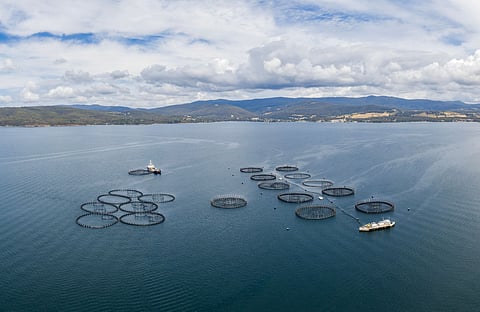

Although both fisheries and aquaculture prospered in Australia in 2022, according to the latest edition of the Australian Bureau of Agricultural and Resource Economics and Sciences (ABARES) Australian Fisheries and Aquaculture Statistics, it was aquaculture that stood out within the Australian seafood industry, surpassing the value of wild catch.
"Over the last two decades we’ve seen aquaculture continue to grow, helping to boost overall fisheries production," acting ABARES Executive Director David Galeano claimed.
Specifically, according to the figure provided by ABARES Executive Director, the gross value of fisheries and aquaculture production (GVP) in 2021-22 increased by 8% to AUD 3.42 billion (EUR 2.10 billion / USD 2.31 billion). Galeano also said that the share of aquaculture in total Australian fisheries and aquaculture GVP in 2021-22 was 56%, driven largely by an increased value of salmonids.
As far as exports of fishery and aquaculture products are concerned, according to figures provided by ABARES, in 2021-22 the total value increased by 2% to AUD 1.28 billion (EUR 789 million / USD 866 million), largely reflecting the increase in export values of salmonids and abalone.
In terms of domestic consumption, in 2021-22, Australians consumed around 350,000 tons of seafood, equivalent to 13.8 kilograms per person. While consumption of seafood was less than chicken, pork and beef, it was above lamb and mutton meat consumption for the year.
"Australians love their seafood, a fact that’s hard to forget as we head into the holiday season when many will be enjoying Australian prawns," David Galeano said.
However, not all consumption of seafood - especially prawns - corresponded to domestic production. According to ABARES data, the value of imports of fishery and aquaculture products increased by 2% to AUD 2.19 billion (EUR 1.3 billion / USD 1.4 billion) in 2021-22, precisely driven by the increase in the value of prawns.
The Australian Bureau of Agricultural and Resource Economics and Sciences (ABARES) is the research arm of the Australian Government Department of Agriculture, Fisheries and Forestry. Its mission is to provide professionally independent data, research, analysis, and advice that informs public and private decisions affecting agriculture, fisheries, and forestry in the country.
